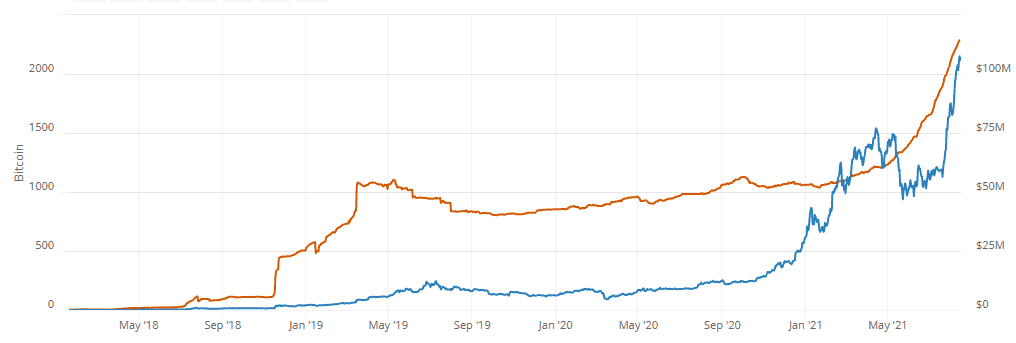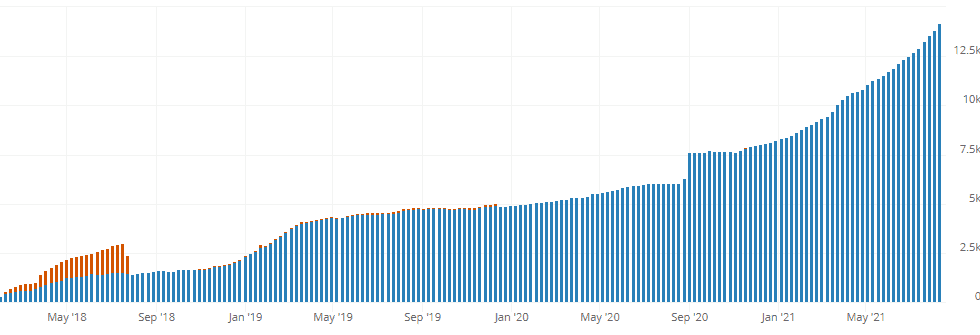Around 14,160 nodes have joined the Bitcoin Lightning Network so far. Does the second-layer network with a Twitter integration find its way into the mainstream?
The growth of the Lightning network is accelerating exponentially. As of today (August 17), 14,160 nodes are live, around 130 percent more than in the same period of the previous year. At that time, only 6,100 nodes were connected to the network. This is based on data from Bitcoin visuals emerged.
With the nodes, the number of Lightning Channels also increases sharply. According to the current status, Bitcoin Visuals has 64,900 channels in the network. Since nodes often maintain several channels, the number of channels is significantly larger than that of nodes.



Last but not least: the network’s capacity is also growing. Around 2,260 BTC are currently provided in the second-layer network, which corresponds to a total liquidity of 105 million US dollars. This also clearly shows the use case of the Lightning network. Because Lightning is still too illiquid for large transactions; however, the network is already ideally suited for small payments, so-called micropayments.
Capacity growth is also tracing an exponential curve. Exactly a year ago, the liquidity in the network was 1,000 BTC, only around half of what it is today.



Confidence in the security of the Lightning network is also growing. At 0.035 BTC, the channel’s average capacity is around $ 1,600.
Bitcoin Lightning Twitter integration?
Twitter founder Jack Dorsey could also have boosted the network. The billionaire and Bitcoin advocate announced a Lightning integration in Twitter on August 12th. For example, users could monetize content that they previously made available on the platform for free.
For Bitcoiners, the Lightning network is probably the only viable solution to make BTC fit for daily payment transactions. After all, the Bitcoin on chain fees and long confirmation times of at least ten minutes for small payment transactions are far too high. In addition, there are always extreme network loads, so that transactions sometimes have to wait days for confirmation.
Lightning, on the other hand, offers instant payment processing and fees of less than a cent. This is possible because not every payment is propagated on the blockchain, but is processed off-chain. This is where the name second-layer network comes from.
Especially for Bitcoiners, who do not want to touch the block size limit of one megabyte under any circumstances, Lightning is the means of choice for sustainable scaling of the network.
If you would like to find out more about how the Lightning network works, take a look at our BTC-ACADEMY.
